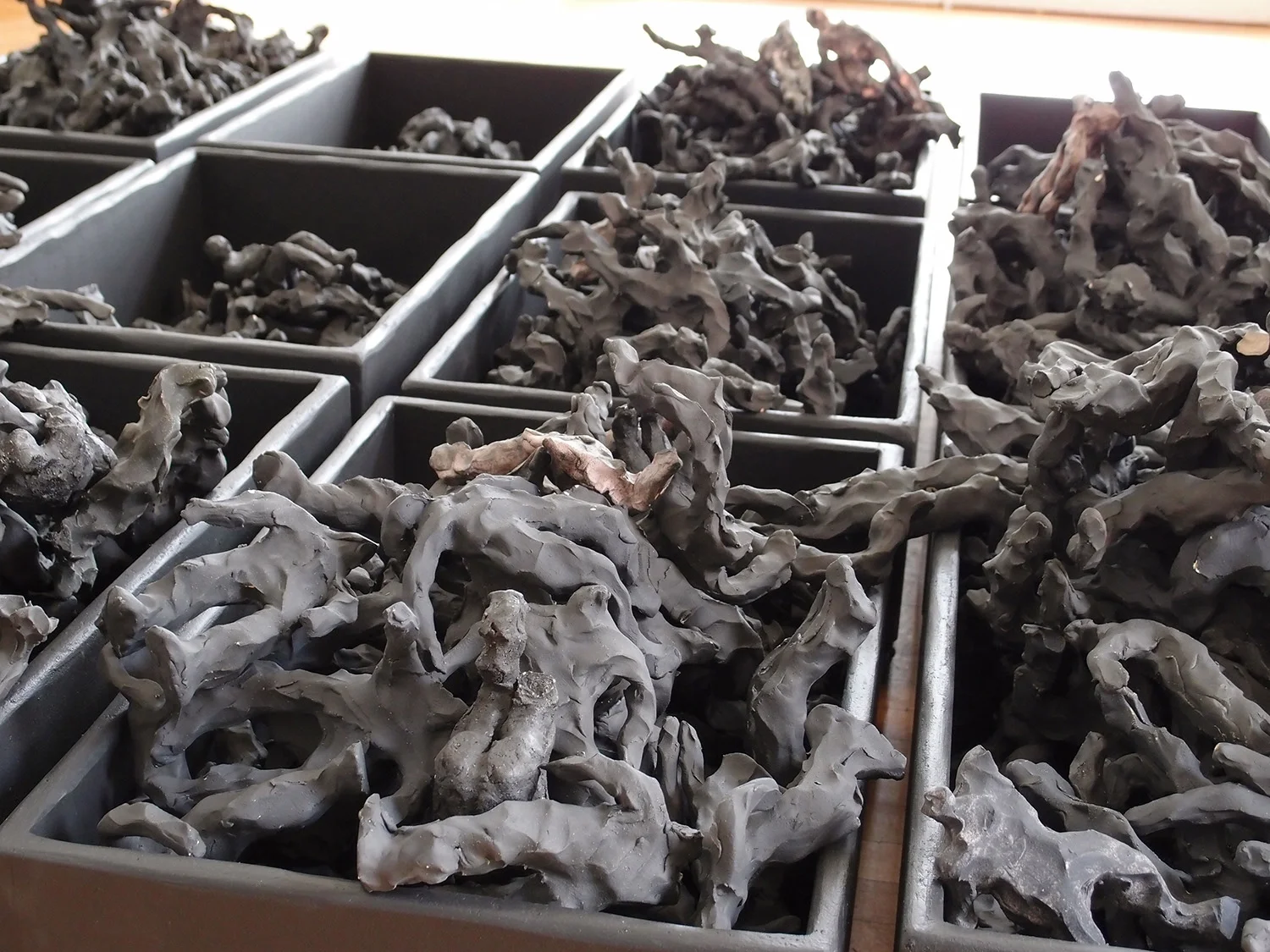PASSAGE (A journey across the void)
To create is to last. As long as you last you feel the leaving and coming, you feel your individuality in relation to the other and to the society. To last through artworks manifests itself in a continuously progressing energy that allows for escalating repetitions or brings something new, original and unpredictable. Life in art is in this sense a continuous process of creation that without cessation reshapes how we experience, feel and learn. To create in clay is to knead, soften with fingers and palms, to modify earth’s material, which makes possible to create moldable shapes.
Through her work of creating Vera Stanković, especially in the last years, dedicates herself to clay. In it she combines contemplations about form and life itself, which through her sculptural compositions become two combining principles, constantly in mutual completion, through artistic process of creation and performance, in a certain harmony filled with various levels of narrative, depth of meaning and expression. Clay compositions clamped in space again and again expose the possibilities of different repetitions, giving separate meanings to what has been lived, felt and made conscious. Sculptural works therefore gain a subtly expressive power, being forthright responses to artist’s immediate personal experiences, bound to life in the past and contemplations of the future. Small clay figures, people in various moves and situations are frozen thoughts, shooting stars of memory, notes on sensations that in compositions express certain internal liveliness, a visible force, directed towards the journeys to the chosen destination. Sculptural composition, titled Passage (2011) is an art expression of a journey. Two hundred and thirty small figures of people walk, travel down the road, they move towards the passage, a gorge in a way, a void or a notch, that interrupts continuity or lightness of the flatness of the road. The figures are like a crowd of individuals, artistically spread or clamped in the rhythm of the life’s tendency to continually test our experiences through different levels of feeling and thinking.
In the first part of the sculptural composition the number of figures is dense, filled with hope of salvation, life courage. Figures on the beginning of the road bring about feelings of overcoming all traps, accidents and sadness, which lurk on everyone. Yet, the journey is dangerous, on the outside life at first appears to be a life of conservation and bloom, but on its journey it grows old, changes and falls into different spiritual, bodily and social traps. Human is constantly being tested, often times hurtling towards the unknown, towards trappings of various psychophysical voids, from which only few rise but these stronger, more experienced and most importantly wiser and better people. Successful journey across the void, the passing from the starting state of hopes and desires towards the new road is the moment of initiation when realization sets in. A niche of selection. It empowers only those capable of surviving, growing stronger, perhaps changing into something greater and better; for those, who failed and are defeated, it is the moment when life blacks out, a kind of death, reflected also in the color of the figures. Dark, numb in hardened moves, even decomposed, on the way to the scrap yard of history. A long line of mining trolleys hauls them away, the last transport vehicle, reserved for the deceased. The few, who survive all trials rise up the new road, they are filled with trials, colored in lighter tones, reminiscent of human skin. Survivors are thus full of new strengths, bravery and hope. The sculptural composition is an artistic initiation process of sorts that clashes the individual with the reality, inside himself as well as inside society at large.
Vera Stanković tests and discovers life meaning. Her artworks, clay sculptural compositions are always filled with stories: motives and contents reveal themselves before us as models of life, taken from personal experiences. These models, combined with the esthetic experience, have a great innate value as they carry their own meaning, independent autonomy yet at the same time enable the search for new realizations and positions of a human in the contemporary society.
Sarival Sosič
A special thanks to Unicum and DLUM, who invited me to make this project.










